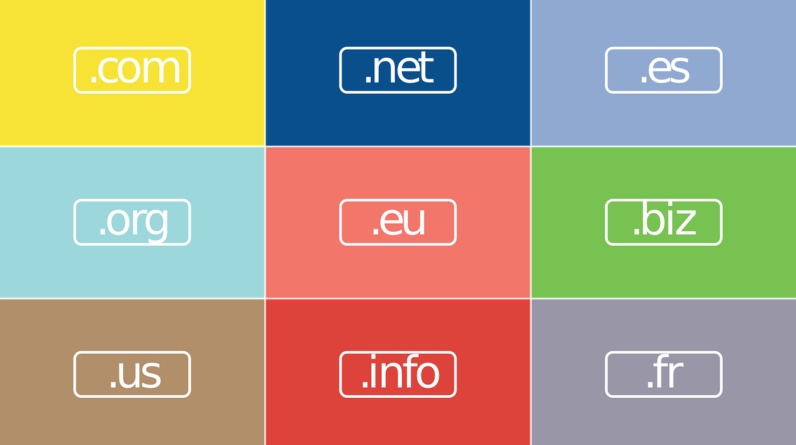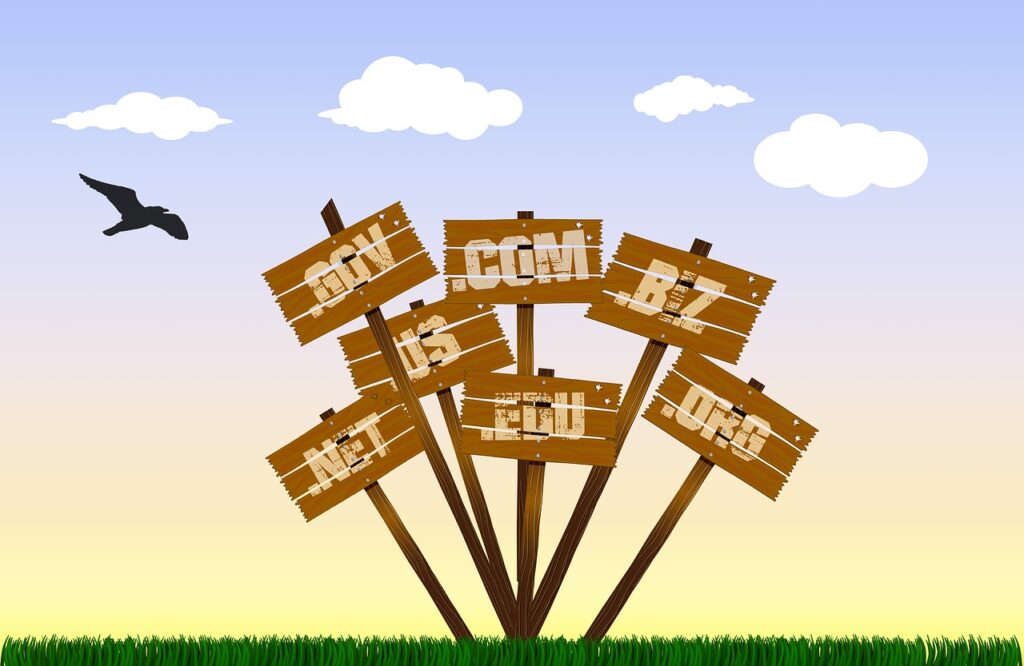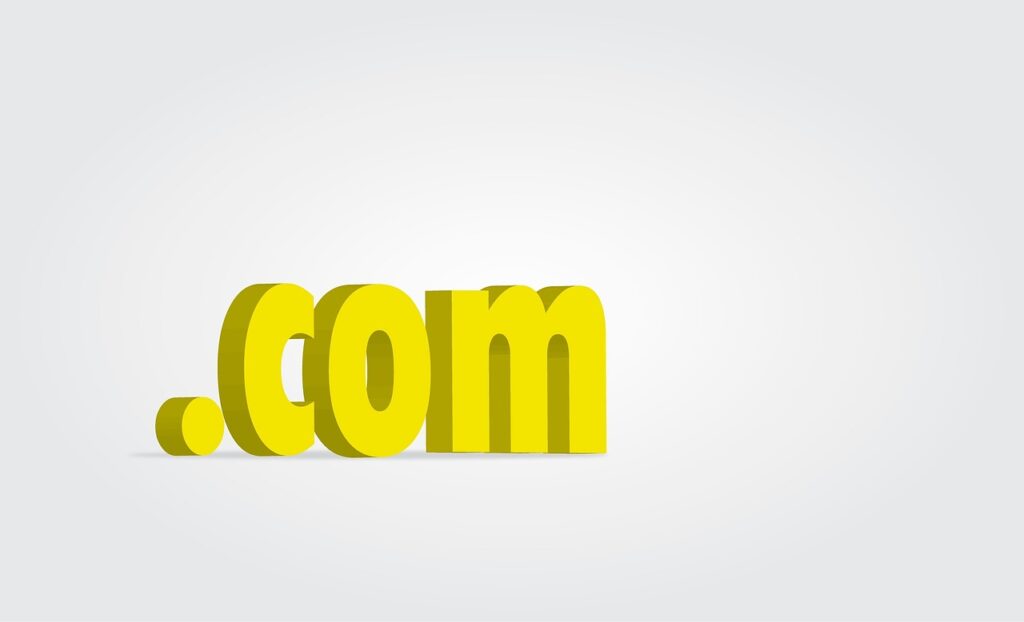
Have you ever wondered how the domain name of a website can shape your perception of its security? This article explores the impact of “.com” domains on user perceptions about website security. Dive into the fascinating world of domain names and discover how this seemingly small detail can play a significant role in shaping our trust in online platforms.

Website Security Basics
Importance of website security
When it comes to running a website, security should be a top priority. Ensuring the security of your website is important for various reasons. First and foremost, it protects your valuable data and sensitive information from unauthorized access. This can include personal information of your users, financial data, or any other confidential details that might be stored on your website.
Website security is also crucial for maintaining customer trust and loyalty. In today’s digital age, where cyber threats are on the rise, users are becoming increasingly concerned about the safety of their online information. If your website does not have adequate security measures in place, users may be hesitant to interact with your site, make online purchases, or provide their personal details. Simply put, a secure website is a key component in building and maintaining a positive online reputation.
Common website security threats
Understanding the various website security threats is essential in implementing effective security measures. Some of the most common threats include:
-
Malware: Malware refers to any malicious software that is designed to harm your website or gain unauthorized access to sensitive information. This can include viruses, ransomware, spyware, and more. Malware can cause significant damage to your website and compromise the security of your users’ data.
-
Phishing Attacks: Phishing attacks involve tricking users into disclosing their personal information, such as passwords or credit card details, by posing as a legitimate entity. Phishing attacks often occur through deceptive emails or fake websites that mimic trusted brands. These attacks can lead to identity theft and financial loss for both individuals and businesses.
-
DDoS Attacks: Distributed Denial of Service (DDoS) attacks aim to overwhelm a website’s server with an influx of traffic, causing it to crash or become inaccessible. DDoS attacks can disrupt the availability of your website, leading to a loss of revenue and negatively impacting user experience.
-
SQL Injection: SQL injection attacks involve injecting malicious code into a website’s database, allowing attackers to retrieve or manipulate sensitive data. This vulnerability can be exploited by attackers to gain unauthorized access to confidential information, such as usernames, passwords, or credit card details.
Understanding these threats is crucial in taking proactive measures to protect your website and ensure the safety of your users’ information.
User perception of website security
Website security plays a significant role in shaping user perceptions. Users are increasingly aware of the potential risks associated with online activities, and they look for indicators that a website is secure before engaging with it. If a website appears to be insecure or lacks proper security measures, users may be hesitant to provide their personal information or make online transactions.
User perception of website security can be influenced by various factors, including the presence of trust indicators, such as SSL certificates or security badges, clear privacy policies, and a well-designed user interface that instills confidence. Additionally, the domain extension of a website can also impact user perceptions of security, which leads us to the next section exploring the influence of domain extensions on user trust.
Domain Extensions and User Perceptions
Understanding domain extensions
Before delving into the impact of domain extensions on user perceptions, it is essential to understand what a domain extension is. A domain extension is the last part of a website’s domain name, following the “dot” symbol. For example, in the domain name “example.com,” the “.com” part is the extension.
Domain extensions are categorized into different types, each serving a specific purpose or representing a specific country or industry. The most common types of domain extensions include generic top-level domains (gTLDs) such as .com, .net, and .org, as well as country-code top-level domains (ccTLDs) like .uk, .ca, and .au.
Popular domain extensions and their meanings
Different domain extensions have varying meanings, and users often associate specific perceptions and expectations with each extension. Here are some popular domain extensions and their general meanings:
-
.com: This is the most widely recognized and popular domain extension. It stands for “commercial” and is generally associated with businesses, organizations, and commercial websites.
-
.net: The “.net” extension originally stood for “network” but is now used more broadly. It is commonly associated with websites related to networking, technology, internet service providers, and online platforms.
-
.org: The “.org” extension symbolizes “organization” and is primarily used by non-profit organizations, charities, and other similar entities.
-
.edu: This domain extension is reserved for educational institutions, such as universities and colleges.
-
.gov: The “.gov” extension is exclusively used by government entities and agencies, providing assurance of the website’s authenticity and credibility.
These examples illustrate how users often associate specific meanings and expectations with different domain extensions. Therefore, the choice of domain extension can significantly impact user perceptions of a website’s credibility and trustworthiness.
Impact of domain extensions on user trust
The domain extension of a website can influence user trust and perceptions of security. As mentioned earlier, the “.com” domain extension is widely recognized and associated with commercial websites. It has established a reputation for credibility and trust over the years, making it the preferred choice for many businesses.
Users have become accustomed to seeing “.com” domains in their day-to-day online activities, and they have come to trust these websites as reliable sources of information and services. Consequently, when users encounter a website with a different or less common domain extension, they may experience skepticism or doubt about its legitimacy and security.
The association of .com domains with credibility and familiarity makes them an advantageous choice for businesses looking to instill trust and confidence in their online presence. However, it is important to note that while the domain extension can contribute to user perceptions, it should not be the sole factor in assessing a website’s security. Actual security measures implemented by the website are equally important, as we will explore in the next section.

The Significance of .com Domains
History and popularity of .com domains
The .com domain extension has a rich history and is deeply rooted in the internet’s development. It was one of the original generic top-level domains established in 1985, signifying its longevity and widespread adoption. Over the years, .com domains have become the standard choice for businesses and organizations around the world.
The popularity of .com domains can be attributed to several factors. Firstly, .com has been widely promoted and advertised as the primary extension for commercial websites. This extensive marketing has helped establish .com as the default choice for businesses wanting a professional online presence.
Secondly, the perception of .com domains as prestigious and trustworthy has been reinforced by their widespread use by notable companies and brands. Major corporations, such as Amazon and Google, have .com domains and have achieved tremendous success, further solidifying the association between .com and credibility.
Lastly, the ease of memorization is another contributing factor to the popularity of .com domains. They tend to be the first extension that comes to mind when users think of a website. The familiarity and ease of recall make .com domains highly desirable for businesses seeking maximum visibility and brand recognition.
Association of .com domains with credibility
The association of .com domains with credibility is deeply ingrained in user perceptions. Seeing a .com domain can provide users with a sense of familiarity and trust, as they are accustomed to interacting with reputable websites that utilize this extension.
Users often perceive businesses with .com domains as more established, reliable, and professional. This perception can influence their decision to engage with the website, make purchases, or share personal information. Consequently, having a .com domain can enhance the credibility of a business and instill confidence in users.
While the association of .com domains with credibility is significant, it is essential to note that security is not solely determined by the domain extension. Actual security measures implemented by the website, such as SSL/TLS encryption or secure payment gateways, are critical in ensuring the safety of user data. Therefore, businesses should prioritize both a .com domain and robust security measures to build trust with their users.
Perceived security benefits of .com domains
Apart from credibility, .com domains are also associated with perceived security benefits. Users tend to view .com domains as more secure compared to less common or unfamiliar extensions. This perception can be attributed to the widespread awareness of .com domains and their long-standing reputation.
The perception of security associated with .com domains can be advantageous for businesses, as it can attract users who prioritize security when interacting with websites. However, it is crucial to remember that perceived security does not always align with actual security measures implemented by the website. Users should be educated about other important indicators of website security, which we will explore in the later sections of this article.
Domain Extensions and Phishing Attacks
Domain extensions commonly used in phishing attacks
Phishing attacks often rely on deception, tricking users into believing that a fraudulent website is a legitimate one. Attackers often choose domain extensions that closely resemble trusted domains to mislead users. Some common domain extensions used in phishing attacks include:
-
.com variations: Attackers may use domain extensions that resemble .com, such as .cm, .co, or .cn, to create phishing websites that mimic popular brands and deceive users.
-
Country-code top-level domains (ccTLDs): Attackers may use country-specific domain extensions, such as .uk, .au, or .ca, to target users in those regions and exploit their trust in local websites.
-
Misspellings and homographs: Phishers may utilize domain extensions that consist of misspellings or homographs of trusted extensions, making it harder for users to distinguish them from legitimate websites.
By using these deceptive domain extensions, phishers can create a false sense of trust and credibility, tricking users into sharing their sensitive information or falling victim to other fraudulent activities.
Why .com domains are preferred by phishers
While deceptive domain extensions can be used in phishing attacks, .com domains are preferred by phishers due to their widespread recognition and reputation. Phishers often create fraudulent websites with .com domains that mimic the appearance and functionality of legitimate websites to increase their chances of success.
Users are more likely to enter their personal information or perform financial transactions on websites with .com domains as they are perceived as trustworthy. By using .com extensions, phishers can exploit this perception and make their phishing websites appear more legitimate.
Therefore, it is essential for users to exercise caution and skepticism, even when interacting with websites using familiar domain extensions. Educating users to be aware of other security indicators beyond the domain extension can reduce the risks associated with phishing attacks.
User caution and skepticism towards unusual domain extensions
Unusual domain extensions, especially those that are uncommon or unfamiliar, can trigger caution and skepticism among users. When users come across a website with an unfamiliar domain extension, they may doubt its legitimacy and potential security risks. This skepticism stems from the fact that they are not accustomed to seeing or interacting with such extensions in their online activities.
Users are generally more prone to trust websites with domain extensions they recognize and associate with credibility. Less common domain extensions may raise red flags and prompt users to be more vigilant in evaluating the website’s credibility and security measures.
However, it is crucial to remember that not all unfamiliar domain extensions indicate malicious intent or lack of security. Some legitimate organizations and businesses may opt for unique domain extensions to stand out or align with their industry or mission. Users should consider additional security indicators and measures beyond the domain extension to accurately evaluate the website’s security.

Perception vs. Reality: Security Measures
Understanding the influence of domain extensions on security perceptions
Domain extensions play a role in shaping user perceptions of a website’s security. As discussed earlier, familiar extensions like .com are associated with credibility and trust, while less common or unfamiliar extensions may trigger caution or skepticism.
However, it’s important to note that the perception of security driven by domain extensions does not always align with the actual security measures implemented by a website. A website with a less common extension may still have robust security measures in place, while a website with a .com extension may have vulnerabilities.
Users should be educated about the distinction between perceived security based on domain extensions and actual security measures that are essential for protecting user data. By understanding this difference, users can make informed decisions and not solely rely on the domain extension when assessing a website’s security.
Actual security measures implemented by websites
Website owners must implement a range of security measures to protect their websites and the information of their users. These security measures can include:
-
SSL/TLS encryption: Secure Socket Layer (SSL) and Transport Layer Security (TLS) encryption protocols are crucial in ensuring the secure transmission of data between users’ browsers and the website’s server. Implementing SSL/TLS encryption helps protect sensitive information, such as login credentials, payment details, and personal data, from interception by unauthorized individuals.
-
Strong password policies: Encouraging users to create strong, unique passwords helps prevent unauthorized access to their accounts. Websites should enforce password requirements, such as minimum length, combination of uppercase and lowercase letters, numbers, and special characters. Additionally, implementing multi-factor authentication adds an extra layer of security by requiring users to provide multiple forms of identification.
-
Regular software updates and patches: Keeping all website software, including content management systems (CMS) and plugins, up to date is crucial for maintaining security. Software updates often include bug fixes and security patches that address known vulnerabilities. Failure to update software can leave websites susceptible to attacks targeting outdated or unpatched software versions.
-
Firewalls and intrusion detection systems: Implementing firewalls and intrusion detection systems adds an extra layer of protection by monitoring network traffic and identifying and blocking suspicious or malicious activities. These security measures help prevent unauthorized access and protect against common attacks, such as Distributed Denial of Service (DDoS) attacks.
-
Regular data backups: Performing regular backups of website data is essential to ensure the ability to restore the website in case of a security incident or data loss. Backups should be stored securely and tested regularly to ensure their integrity.
By implementing these security measures and staying up to date with the latest security practices, website owners can significantly reduce the risks associated with various security threats.







